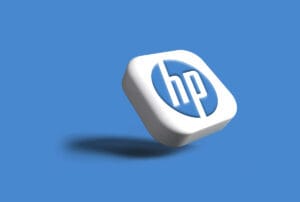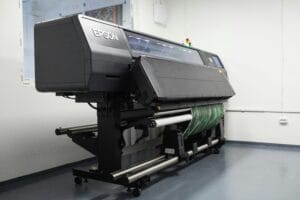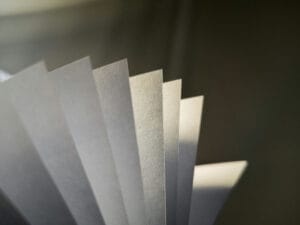You’ve just installed a fresh ink cartridge into your printer, ready to start printing in your office or business.
But when the pages emerge from your machine, you frown–your printer has new ink but prints faded.
It’s an incredibly frustrating situation that can be hard to diagnose. Why is my printer printing faded with new ink installed, you think.
There are several reasons for a brand new ink cartridge printing faded, including air bubbles, dirty printheads, incorrect settings, or issues with your printer tape.
You don’t have to try to figure it all out on your own, though- we’ll help you troubleshoot and fix this common issue in this guide.
Why is My Printer Printing Faded With New Ink?
So, why is my printer printing faded with new ink installed?
There are several possible causes for why you might be dealing with a brand new ink cartridge printing faded. These include everything from an ink cartridge not communicating with a printer to expired ink.
The Cartridge Isn’t Fully Installed
One of the most common reasons a printer has new ink but prints faded is a simple one–the cartridge wasn’t installed properly.
Rather than throwing up your hands in frustration and wondering, ‘Why is my printer printing faded with new ink?’ you should first open your machine and check the cartridge seatings.
On many printers, you’ll need to listen for a clicking sound as you place the cartridge into the slot. If you didn’t do this step correctly, your printer won’t be able to draw ink, creating those spotty results.
Thankfully, this has a quick fix–you just need to reset your cartridge. Check out our guides for specific brands, how to change ink in an Epson printer, or how to change ink in an HP printer.
The Protective Tape Wasn’t Removed
If you’re still experiencing a brand new ink cartridge printing faded even after reinstalling it, there are several other potential causes to consider.
Why is my printer printing faded with new ink? It might be because you’ve inadvertently prevented ink from leaving the cartridge!
New ink cartridges have protective tape on their exteriors. Manufacturers place these to prevent ink from leaking during transport and in storage.
If you didn’t remove the tape, that will block the flow of ink. That includes any leftover residue, so make sure it’s completely gone.
Protective tape on an ink cartridge is usually a contrasting color, such as orange, blue, or clear, with a pull tab.
Ink Hasn’t Fully Saturated the Printhead Yet
When a printer has new ink but prints with faded colors, the cause is often benign. A common occurrence many homeowners and office managers experience is giving up on a fresh cartridge after one or two prints go wrong.
Your printer needs a bit of time to warm up to fresh ink. Your machine’s printhead needs to be fully saturated with ink from the reservoir.
If you’ve just installed your new cartridge, we recommend running your printer’s cleaning cycle to help prime the ink. Then you can run a few test pages. If you still experience spotty results, wait 30 minutes for the ink to settle and try again before trying other fixes.
You Installed a Low-Quality or Expired Cartridge
Why is my printer printing faded with new ink? Sometimes the answer is straightforward–maybe the new ink is the problem.
If you’re using a cheap brand of bargain ink, one that isn’t compatible with your machine, or a cartridge that has been sitting on your shelves for too long, you’ll experience bad results. Check the expiration date on your packaging first to verify that it’s still good.
Many printers don’t work well with third-party, non-OEM inks. Even if the cartridge is of good quality otherwise, it may be the worst choice for your machine.
Air Bubbles in the Cartridge or Printhead
Air bubbles can also cause faded spots on your pages and white streaks. Air can become trapped within your printhead or the cartridge itself, stymying the flow of ink onto the page.
These bubbles can pop and reform haphazardly, causing those inconsistent print results.
There are several possible causes of air bubbles, including temperature changes in the ink during storage, rough handling, or natural degradation. Running your printer’s cleaning cycle can help, but you may need to remove the cartridge completely and reinstall it to resolve the issue entirely.
Clogged or Dried Printheads
You can think of the printhead on your machine like a showerhead or faucet. When the tiny holes on it get blocked with dried ink or dirt, the fresh ink won’t be able to flow onto the page.
If your printer or ink cartridges have been collecting dust for weeks or months, you’re more likely to encounter a clogged printhead.
Once the ink hardens inside your printhead, you’ll need to clean it. No amount of fresh ink will be able to get through.
Print Settings Are Incorrect
Modern printers come with several different modes and settings that can affect the outcome.
Settings like “Drafting” or “Economy” intentionally print lighter to conserve ink. It can be helpful for simple black-and-white copies, but not so much if you’re aiming for vibrant images.
Other options, such as DPI settings, paper types, and “Fast printing,” may be incompatible with your setup.
You can edit your quality settings by switching to “Normal” or “High Quality” (some brands may use different terms).
Low-Quality or Wrong Type of Paper
Similarly, the paper you use in your printer could be the cause of disappointing printing results. If you’ve wondered why printing stores can produce jaw-dropping photos but your home printer doesn’t cut it, it’s often due to differences in paper.
Low-quality paper doesn’t work well with ink, spreading it around haphazardly. You’ll need to match your paper quality with the type of printing you’re using.
Recycled copy paper might be fine for basic black-and-white printing. But Inkjet paper or premium photo paper is much better for producing high-quality, vibrant images.
Make sure you’re storing your paper in a clean and dry space, too, as temperature changes can affect the quality of your results.
Misaligned Printhead
Just as a clogged printhead can cause fading and streaks, so too can misalignment. If your printing comes out off-center or blurred, the printhead likely needs recalibration. It’s particularly common after paper jams or right after installing a new cartridge.
Most printers have built-in alignment settings in their software. Check your manual for more information.
Firmware or Driver Glitches
Software and outdated drivers may be the cause of your fading prints. Glitches can cause incorrect colors to appear or make text blurry.
Check your drivers and install updates, as they often contain the fixes to these glitches. Sometimes, a simple reboot of your computer and printer can fix the problem. You can also change how you connect to your printer, such as switching from USB to Wi-Fi or vice versa.
What to Do if Your Printer Has New Ink But Prints Faded
Now that you have an idea of some potential causes of your printing issues, let’s discuss how to fix them.
Most of these issues should be manageable with just a bit of time and the products you have on hand at the office, so try them all out before rushing to throw out your ink or replace your printer.
Double-Check Installation and Remove Any Tape
If you didn’t hear that initial ‘click’ sound during installation, it’s likely the cartridge isn’t seated correctly. Pop open your machine and make sure it’s firmly in place.
If it is, the tape may be blocking the ink flow. Remove all of the protective tape from the outside of the cartridge, including any plastic caps or plugs. Make sure you do so without touching the metal contact points, as this can also affect the ink flow.
Run a Nozzle Check or Printhead Test Page
Most modern printers contain several settings and tests you can run to diagnose problems. Nozzle checks will analyze the flow of ink through the printhead, highlighting any that need further attention.
Any clogs, streaks, or missing sections should be fixed accordingly.
Clean the Printhead
Dry ink can accumulate in your printhead, clogging it and affecting your printing output.
Most printers have automatic cleaning cycles you can run through a control panel, software, or a web interface. This cleaning cycle may solve the problem right away, but it’s normal if it takes a couple of tries.
If automatic cleaning doesn’t work, you can also manually flush your printheads. Get some distilled water or cleaning solution, and soak the printhead in it. You can then blot it with a microfiber cloth or paper towel.
If your printhead can’t be removed, you can place a towel directly under it and let it sit for 10 to 15 minutes.
There are also specialized cleaning kits for printheads if you still can’t get the dried ink out after a few tries, but we recommend checking your manufacturer’s instructions before proceeding.
Print a Few More Pages
Remember that sometimes, faded pages are just the result of a printer that hasn’t ‘warmed up’ yet. If your printer has been sitting unused for weeks or months, or you’ve just installed brand new cartridges, you’ll want to run a few pages to let the ink fully flow through the machine.
Test pages are great for this–you’ll be able to diagnose issues and get ink flowing simultaneously.
Try Different Paper
Swapping out paper can have a direct impact on your print results. If you’re primarily printing photos, banners, or other pieces with vibrant images, using photo-quality paper will help mitigate fading and streaking.
We recommend comparing printing results between copy paper and inkjet paper side by side. If there’s a big difference, it’s a sign that your printer is working as intended, and it’s a paper problem.
Restart the Printer and/or Reinstall Drivers
As any IT department will tell you, sometimes the best solution is just hitting the reset button. Printers use complex software to get the job done, and glitches can happen unexpectedly. Restarting your machine may fix the problem immediately, even if the cause is unclear.
Updating or reinstalling your drivers can also be beneficial, as software updates may address old bugs.
Replace the Cartridge if None of the Above Works
Okay, so you’ve reseated your cartridge, removed tape, swapped out paper, cleaned your printhead, and updated your software. If you’re still dealing with faded print results, your last resort before replacing your machine entirely is to replace the cartridge.
At this point, the fading print results might be because your ink cartridge was of low quality, expired, or simply not compatible with your printer. If a newer cartridge produces the high-quality results you’ve been looking for, you’re all set.
Parting Thoughts on Brand New Ink Cartridge Printing Faded
We’ve explored everything you need to know about dealing with fading and streaky printing results. You have an actionable set of steps to follow to troubleshoot and fix potential issues, all the way up until replacing the cartridges or the printer entirely.
The only thing left for you to figure out is what to do with unused ink cartridges you’re left with after replacing your machine or buying new compatible ink.
You could donate unused ink cartridges, which is a good idea and may bring tax breaks. On the other hand, you probably don’t want to explore how to transfer ink from one cartridge to another, since in most cases it’s a waste of your time and energy.
There’s a third option you can take that can even help you recoup some cash: you can sell unused printer ink cartridges!
At Selltoner.net, we are the premier ink and toner reverse logistics company. We buy unused, open ink and toner cartridges from all the major brands, including HP, Xerox, Epson, Brother, Canon, and more.
We have a friendly customer support team and an easy online interface, giving you instant cash offers and quick payment. We even cover the shipping cost.
If you want to learn more about how to make money on your unwanted new ink and toner, visit our website or talk to our team today!





